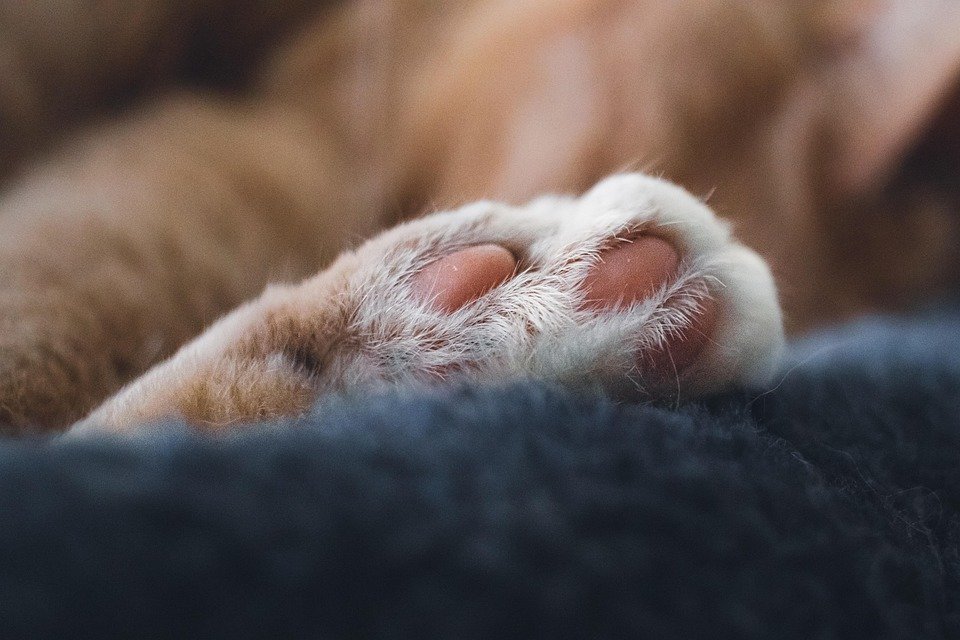
Introduction to Cat Paw Pad Care
Cats are known for their graceful movements and ability to land on their feet. A critical component of their agility is their paw pads. These small yet mighty parts of a cat’s anatomy not only provide cushioning and traction but also serve as essential tools for communication and exploration. Despite their resilience, paw pads require proper care to remain healthy and functional.
The Importance of Paw Pad Care
Paw pads play several vital roles in a cat’s life. They act as shock absorbers during landings, help with temperature regulation, and assist in scent marking. Furthermore, healthy paw pads are crucial for a cat’s overall mobility and comfort. Ignoring paw pad care can lead to issues such as dryness, cracking, and infections, which can impact a cat’s quality of life.
Understanding the Anatomy of Cat Paw Pads
A cat’s paw pad is composed of a thick layer of fatty tissue covered by a tough outer skin. This structure provides insulation against extreme temperatures and surfaces. Each paw consists of several pads: the digital pads beneath each toe, the larger metacarpal and metatarsal pads, and the carpal pad on the front legs, which assists in climbing and stopping.
Signs of Healthy Paw Pads
Healthy paw pads should be smooth, soft, and free of cuts or abrasions. They should not exhibit any signs of dryness or cracking. The color of the paw pads can vary depending on the cat’s breed and coat color, but they should appear uniform in color with no unusual discolorations or growths.
Common Paw Pad Problems in Cats
Dryness and Cracking
Dry and cracked paw pads can occur due to environmental factors such as extreme weather, indoor heating, or air conditioning. This condition can lead to discomfort and pain for your feline friend.
Burns and Blisters
Walking on hot surfaces, such as asphalt or metal, can cause burns and blisters on a cat’s paw pads. Burns can be painful and may lead to infections if not treated promptly.
Cuts and Abrasions
Cats are naturally curious and may occasionally step on sharp objects, resulting in cuts or abrasions. These injuries can become infected if not cleaned and treated appropriately.
Infections
Infections in paw pads can arise from untreated wounds or foreign bodies embedded in the pad. Signs of infection include swelling, redness, and discharge.
Parasite Issues
Fleas, ticks, and mites can sometimes target a cat’s paws, leading to irritation and potential infections.
Essential Paw Pad Care Tips
Regular Inspection
Make it a habit to regularly inspect your cat’s paw pads for signs of injury, dryness, or infection. This can be done during grooming sessions or playtime when your cat is relaxed.
Gentle Cleaning
Clean your cat’s paws regularly using a damp cloth. This will help remove dirt, debris, and potential irritants. Avoid using harsh soaps or chemicals that can further dry out the paw pads.
Moisturize the Pads
Use a pet-safe moisturizer to keep the paw pads soft and supple. Avoid using human lotions or creams as they may contain ingredients harmful to cats. Products specifically formulated for pets are available at most pet stores.
Trim Excess Hair
Some cats have tufts of hair growing between their paw pads. Trimming this excess hair can prevent mats and reduce the accumulation of dirt and debris.
Paw-Friendly Environment
Ensure that your cat’s environment is safe and paw-friendly. Provide soft surfaces for your cat to walk on and avoid exposing them to hot pavements or icy conditions.
Healthy Diet
A balanced diet rich in essential fatty acids can contribute to healthy skin and paw pads. Consult with your veterinarian to ensure your cat’s diet meets all its nutritional needs.
Foot Soaks
For cats that tolerate water, occasional foot soaks in lukewarm water with a pet-safe antiseptic can help keep the pads clean and free from bacteria.
When to Seek Veterinary Help
If you notice persistent issues such as swelling, bleeding, or signs of infection, it is crucial to seek veterinary assistance. Early intervention can prevent minor problems from escalating into serious health concerns.
Conclusion
Proper paw pad care is essential for maintaining your cat’s health and well-being. By following these tips and regularly monitoring your cat’s paws, you can help ensure that their paw pads remain healthy and functional. Remember, a little care goes a long way in keeping your feline friend comfortable and active.






